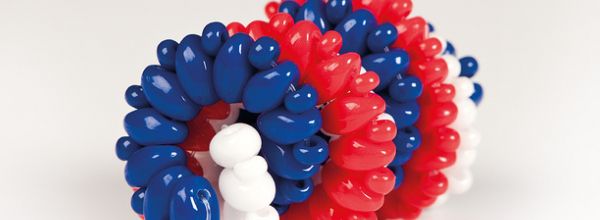If you work in the field of molecular biology, there is hardly a day that goes by that you don’t use nucleotides. But beyond the use of the four well-known deoxynucleotides in PCR, you can use nucleotides for several other applications. For example, kinases and phosphatases use nucleotides as substrates, and phosphotransferases transfer phosphate group from one nucleotide substrate to another.
If you want to study the kinetics of such enzymes, you need to quantify either the substrate or the product. One way to measure nucleotides directly is by using ion-paired reverse phase HPLC.
Methods for Studying Nucleotides
You can detect nucleotides in several ways.
Traditional Spectrophotometer
Most nucleotides absorb electromagnetic radiation in the range of 220-280 nm, and you can detect them using a UV-Visible Spectrophotometer. However, be aware that when the substrate and the product overlap significantly in their absorption spectra, it is difficult to detect one without interference from the other.
Fluorescence Spectroscopy
If the nucleotide you are studying has a fluorophore group in it, you can use fluorescence spectroscopy. Unfortunately, most of the nucleotides do not contain a fluorophore group.
Enzyme Assay
The third option is to set up a coupled enzyme assay. NAD or NADH are the most widely used substrate/product in coupled enzyme systems. In this assay, you detect a change in concentration of NADH by monitoring absorption at 340 nm1. The only catch here is that the coupled enzyme must accept the product of the primary reaction as its substrate. In some cases, this does not happen and the coupled enzyme assay simply fails to work.
Ion-paired Reverse Phase HPLC to the Rescue
If only you could directly detect and quantify a nucleotide without interference from other nucleotides—maybe even separate them out from a mixed solution! Fortunately, you can. Ion-paired reverse phase HPLC has been used to separate a mixture of nucleotides, nucleosides, and nucleobases for three decades now.2,3,4
How it Works
Ion-paired reverse phase HPLC was derived from its parent technique, reversed phase liquid chromatography. It uses a hydrophobic stationary phase and a mobile phase with varying hydrophobicity depending on the ratio of polar and organic solvent. For nucleotide studies, you also add an ion-pairing agent. An ion-pairing agent contains a hydrophobic group that sticks to the stationary phase and a charged group that hangs out of the stationary phase, which makes it charged. This turns the hydrophobic column polar. You can use acidic ion-pairing agents, which are positively charged and bind anionic molecules, or basic ones that bind cationic molecules. The choice of ion-pairing agent depends on your experiment, but there are a lot of options available out there.
In Practice
Let us consider a hypothetical scenario in which you need to separate out ATP, ADP and AMP. Since all three are negatively charged at neutral pH, you need to use an acidic ion-pairing agent like tetrabutylammonium hydrogen sulfate (TBAHS).
ATP is more polar than ADP, which in turn is more polar than AMP. Hence, if you mix all three and pass the solution through the stationary phase, ATP will bind with higher affinity to the ion-paired stationary phase, while AMP will bind with less affinity. Then, you can increase the hydophobicity of the mobile phase by adding organic solvents like acetonitrile or methanol. This causes the nucleotides to detach from the stationary phase and elute out. In our case, AMP will elute out first, followed by ADP and ATP (see image below). Improve the separation by tweaking the concentration of the ion-pairing agent, the percentage of organic solvent and pH of the mobile phase.

Troubleshooting Tips
The two most important factors that affect separation are the type of organic solvent and its concentration in the mobile phase. The two most widely used organic solvents are methanol and acetonitrile. Methanol is more polar than acetonitrile and, hence, is less powerful in separating compounds with stronger affinity for the stationary phase. However, this is not the only factor to consider when choosing your organic solvent. Sometimes methanol just works better than acetonitrile in separating out a specific set of nucleotides. Therefore, try out both organic solvents and see which one works best for you. Compared to nucleotides, nucleosides and nucleobases have very low affinity to the stationary phase and will elute early in the chromatogram and in some cases, even without adding the organic solvent.
Choose the Right Concentration and Gradient of Organic Solvent
For a mixture of nucleotides that differ largely in their polarity, a higher concentration of organic solvent with a steep gradient works fine. For a mixture of nucleotides with minor differences in their polarity, a low concentration of organic solvent with a shallow gradient works better.
Use the Right pH
Nucleotide separation is usually carried out between pH 6.0 and 8.0. At very low pH, nucleotides are not negatively charged and will not bind to the stationary phase. At very high pH, the ion-pairing agent will be neutral and hence not bind to the nucleotides.
Choose the Right Ion-Pairing Agent
Tetrabutylammonium hydrogen sulfate works well for nucleotide separation. Optimal concentration should be about ten times the concentration of nucleotides in the sample. If you use a higher than optimal concentration, it will increase the affinity of the nucleotides for the stationary phase and make elution a difficult task. On the other hand, if you use a lower than optimal concentration, a large portion of nucleotides from your sample will not bind to the stationary phase.
Standardizing an ion-paired reverse phase HPLC protocol that suits your needs can be time consuming. However, it is worth the time investment. You will be rewarded later with a flawless method that will be used for years to come by your colleagues and juniors.
References
- Kaltwasser, H. and Schlegel, H. G. (1966). NADH-dependent coupled enzyme assay for urease and other ammonia-producing systems. Anal Biochem. 16. [back]
- Zakaria, M. and Brown, P.R. (1981) High performance liquid column chromatography of nucleotides, nucleosides and bases. J. Chromatogr. 226. [back]
- A. Werner, et. al. (1989) Ion-pair reversed phase HPLC determination of nucleotides, nucleosides and nucleobases – Application to nucleotide metabolism in hepatocytes. Chromatographia 27. [back]
- Werner, A. (1993) Reversed-phase and ion-pair separations of nucleotides, nucleosides and nucleobases: analysis of biological samples in health and disease. J. Chromatogr. 618. [back]
Suggested Reading
- R. Gloor and E.L. Johnson (1977) Practical Aspects off Reverse Phase Ion Pair Chromatography. J Chromatogr Sci 15(9)







